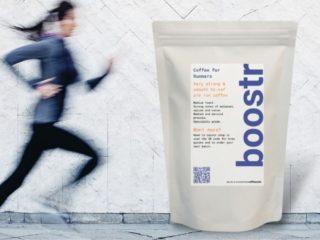Decaffeination: The 4 Main Methods Used to Decaffeinate Coffee
Do you know how your coffee is decaffeinated? Are you drinking coffee processed using solvents or are you drinking coffee using an entirely chemical-free decaffeination process? Here are the four methods used today, and how to spot which one you’re buying.
Get exclusive updates from CoffeeCode right in your inbox
What is caffeine?

Caffeine is a natural stimulant that is naturally found in tea, coffee, and cacao plants. It works by stimulating your brain and central nervous system, helping you to be alert and ward of the onset of tiredness.
Every day, billions of people rely on the mental and physical boost that you get from caffeine. In fact, 80% of the world’s population drinks a caffeinated beverage each day.
We’ve written a couple of other articles that you may find interesting:
How Much Caffeine is there in a Cup of Coffee?
And, Does Coffee Make You Poop?
Also a big thanks to Tom from bigcupofcoffee.com who was a valuable resource in writing this article.
Why do you decaffeinate coffee?

Whilst most of us rely on that daily jolt, some people suffer from caffeine sensitivity which means they get an intense adrenaline rush and feel as if they’ve had multiple espresso even after a few sips of normal coffee. And since these people metabolise caffeine slowly, the effects can last for several hours. Sounds good, right? Not really. Symptoms can include:
- A racing heart
- Headache
- Jitters
- Nervousness or anxiety
- Restlessness and insomnia
Caffeine sensitivity should not be confused with a caffeine allergy which is a potentially dangerous condition.
Other people, me included just love to drink coffee all day, every day, and want a great cup of coffee just before bed. This is why decaffeinated coffee exists.
Who invented decaffeinated coffee?

Exactly who invented decaf coffee is disputed and various theories exist. But the first commercially successful decaffeination method was invented by accident in 1905 by a German coffee merchant called Ludwig Roselius. He received a shipment of coffee beans that has become soaked in seawater. Rather than just disposing of them he decided to roast and test them. What he discovered was a coffee that had almost no caffeine, but still tasted like coffee, even if it was rather salty!
He then worked out that you could use benzene, a chemical that was used in paint remover and aftershave as a solvent to remove caffeine from green beans. This solvent is no longer in use for decaffeination as it’s a known carcinogen.
What is the problem with decaffeinating coffee?

There are a couple of broad problems associated with decaffeination in general.
Firstly, some methods of extracting caffeine are far from natural and can strip out a large amount of the 1000+ flavour compounds that make coffee such a wonderful and complex drink.
Secondly, decaffeinated coffees are not easy to roast. This is for a couple of reasons. Unroasted decaf beans are brownish in colour rather than the normal unroasted green, making it tricky for the roasters to control them. They also have a lower moisture content which makes them respond to heat quicker and roast a lot faster. Not easy!
But a lot of people like decaf coffee to cut down on caffeine, or simply so that you can have a bedtime drink without the stimulating wake-up buzz of caffeine.
Does this mean that all decaf coffee is bad?
Absolutely not – there are some great methods used today – some a lot better and more natural than others. Read on! Traditionally, decaffeinated coffee was a poor substitute of a drink: bland, tasteless and just not worth the bother. But natural, chemical-free processes have come a long way, and you can get amazing decaf coffees that keep the subtle nuances of the individual beans that you’ve come to love.
How is coffee decaffeinated?
In a nutshell, decaffeination is the process of removing nearly all the caffeine from the beans and is done whilst the beans are still in their green unroasted state.
A quick note here on removing “nearly all” the caffeine: European law states that decaffeinated coffee must contain 0.1% or less caffeine in roasted beans, and up to 0.3% or less in (dare we say it?) instant coffee. Just do yourself a favour and skip the instant.
The process, simplified is:
- The green coffee beans are swelled with water or steam to make it easier to extract the caffeine
- The caffeine is extracted using water, solvents or activated carbon
- The decaffeinated beans are dried back to a low moisture level, ready to be roasted
The four main decaffeination processes used today
To simplify it right down, there are broadly four decaffeination processes, two of which are non solvent based and two are solvent based processes.
| Non Solvent Based Process | Solvent Based Process |
| 1: Swiss Water Process 2: Carbon Dioxide Process | 3: Indirect Solvent Process 4: Direct Solvent Process |
1: Swiss Water Decaffeination Process
The chemical-free Swiss Water Process was developed in Switzerland in 1933 and was made commercially viable in 1980. It became available to the open market in 1988 and the process is carried out at the Swiss Water facility in Canada. It’s also known as Mountain Water Decaf, the SWP Method, Activated Charcoal Decaffeination or the Dihydro-oxide Process.

The Swiss Water Process does not rely on chemicals to remove the caffeine, but it’s done using two natural concepts; solubility and osmosis.
The key to Swiss Water Process is their Green Coffee Extract or GCE. This is made by soaking a batch of coffee beans in very hot water which dissolves the caffeine which in turn migrates into the hot water. The caffeine and flavour-rich water is filtered through an activated charcoal filter. This filter only catches the large caffeine molecules and allows the smaller coffee oils and flavours to pass through it. This first batch of coffee is sacrificed to make the GCE solution, and the beans are discarded.
Now listen up – this is where it gets interesting! Because this flavour-rich caffeine-free GCE is saturated with the coffee flavours, it can be used to remove the caffeine from the next batch of coffee without removing many of the flavour, as it’s already saturated. This process takes around 10 hours, and all the while the caffeine and GCE flow through the carbon filters, removing the caffeine but not the flavour.
After this the GCE is filtered and refreshed again, so it can be used again and again.
The result is coffee very close to regular coffee, and 99.9% caffeine free.
Check out the Swiss Water Process on their website. The Swiss Water Process is our number one method of choice for decaffeinating coffee.
2: The Carbon Dioxide Decaffeination Method
This is the newest method of decaffeination and there are a few variants of the process, but the principles are the same. It was discovered by chance by Kurt Zosel, a scientist of the Max Plank Institute, and uses liquid CO2 in place of chemical solvents to selectively remove the caffeine and nothing else.

Green coffee beans are first soaked in water before being place in a stainless steel extraction vessel. The vessel is then sealed, and liquid CO2 is forced into the coffee at pressure of 1,000 psi. As a rough comparison, this is about 33 times higher pressure than your car tyres!
Because pressurised Carbon Dioxide behaves partly like a gas and partly like a liquid, it acts as a solvent to dissolve and remove the caffeine from the green coffee beans, leaving the larger flavour molecules in the beans. The CO2 is then transferred to an absorption chamber where the pressure is released and the CO2 returns to a gaseous state, which leaves the caffeine behind. The CO2 can then be pressurised and reused.
It’s worth noting that CO2 is a natural substance which humans produce, and as such is totally safe for decaffeinating coffee. It’s also cheaper than the Swiss Water Process. But reviews have been mixed and it’s not proved popular for the specialty coffee market, although it remains widely used for decaffeinating commercial grade supermarket coffees.
3: The Indirect Solvent Decaffeination Process
The Indirect Solvent Process was first used in 1941 when it was preferred as a more “natural” way to decaffeinate coffee than the Direct Solvent Process, until the Swiss Water Process became available, and most recently the Carbon Dioxide Method. It’s also known as the KVW Method (Kaffee Veredelugs Werk), the Methylene Chloride Method or Euro Prep.
The green coffee beans are soaked in water near to boiling temperature for several hours, which dissolves and extracts the caffeine from the beans, as well as other flavour compounds and oils. The caffeine and flavour rich water is separated and transferred to another tank.
Methylene chloride, also known as dichloromethane, is now added to the coffee water. MC is a volatile chemical solvent with a boiling temperature of 40°C. The MC bonds with the caffeine in the water and is skimmed from the solution. Once the caffeine is removed and the MC has evaporated, the flavourful coffee water is put back with the green beans where it is re-absorbed.
This method is very popular in Europe, particularly Germany, for large scale commercial supply.
4: The Direct Solvent Decaffeination Process
This is the oldest method of decaffeinating coffee and is still widely used today.
The green beans are steamed for approximately 30 minutes to open their pores. They are then rinsed over and over again with either Methylene Chloride or Ethyl Acetate for around 10 hours. The solvent dissolves and removes the caffeine and leaves most of the flavours in the coffee.
Once this is done the beans are re-steamed to remove any remaining solvent. This is used in cheap commercial coffees and shouldn’t go near your kitchen. Trust us on this one!
Decaffeination Conclusion

To conclude, decaffeinated coffee is not a bad thing. In fact it can be brilliant. If you want the best, most natural and flavoursome decaf coffee, we recommend the Swiss Water Process, with the Carbon Dioxide Method a close second. Although there are no proven health issues from the solvent methods, they’re both unnatural and remove too much of the flavour and character of the beans. Give them a miss.

About CoffeeCode
This article was written by Gregg Romano who is the founder of CoffeeCode, the UK’s fastest growing and most exciting coffee blog. CoffeeCode has a focus on great coffee, inspirational design and sustainability.
Credits:
We always do our best to attribute photos, videos and quotes and information to their original sources. Please contact us if an attribution or content is missing or incorrect.





Awesome resource for coffee lovers like myself. I love me coffee in the morning, noon, night… anytime really. Thank you so much.
Thank you!